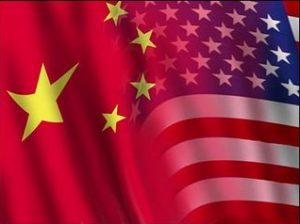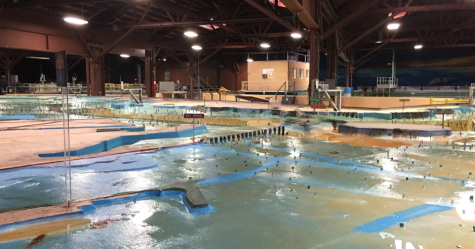Chinese vs. American Education
I’ve taken a lot of jibes about being educated in China. It’s funny at times to be called a robot, a communist, or a communist robot. However, my real pet peeve is when people compare the Chinese educational standards to that of America without any personal experience.
To truly understand the positives and negatives of the educational process, we must first have to define what education is. Many students think it is simply learning everything required for college and heading off to narrow down into a subject of study. However, how often in life are we going to need to analyze Shakespeare, calculate derivatives, or locate lymph nodes? Yet we must learn all of these subjects, which in hindsight might seem rather idiotic. Why not simply categorize us by future profession and save precious resources by honing only those skills from a younger age? However, that is not the purpose of education. Its true purpose is for students to learn a skillset, a process by which we can analyze, categorize, and solve real world problems through honing our minds in various fields. In studying language and history based subjects, students are able to expand their worldview, cultural interpretation, and understanding. In learning mathematics, students learn a organized, logical, methodical process of problem solving. In the education of sciences, students learn application of these to the real world and even thinking “outside the box”, expanding upon all possibilities and realms of understanding.
It is also important to clear some misconceptions of the two sides, as deep-rooted misconceptions formed when one might hear at a young age are extremely hard to dispel; indeed, up until 6th grade I had believed in the five second rule. The Chinese system is not purely of rote memorization, inscribing entire textbooks into memory. It does not entirely consist of the carrot and stick/bamboo cane model, nor is it of generations after generations of naturally born geniuses who excel at generally everything. Similarly, I don’t believe American education consists entirely of lax, “chill” teachers, alcohol-infested parties, Sodom and Gomorrah, and the classic social hierarchy found within such institutions.
Experiences in American kindergarten and the first half of first grade were rather dull. All in all, we were just bricks in the wall of the student body. However, due to unforeseen circumstances, in the second half of first grade, I began attending school in China; things became much more interesting.
The broken desks, peeling wallpaper, extremely outdated materials, and lack of teachers belied the efficiency of the Chinese system. Each day began with a 7AM school-wide recitation of a short clip of ancient poetry, the national anthem, and a series of calisthenics. Subjects were placed in the day according to the school curriculum, and half an hour was allocated to lunch. The school day would end at 5 PM, excluding club activities which could extend to 9 PM. Students would remain seated nearly all day, with teachers for different subjects moving in between their classes. All subjects included daily examinations, in-class practice, and homework on a sheet of 7in.x20in. roll of paper. Major examination scores were always posted, ranking all students publicly outside each classroom. Students also compiled informal rankings of daily and weekly examinations. Teachers and students were taught to be minimalistic with questions and answers, which saved time and also forced students to study independently. There was very little review of previously taught subjects or concepts – that was done privately at home. Instead, homework and quizzes were corrected and students had to learn mistakes through experience and fix them by remedial practice. In this way, school time is maximized to teaching only new material. This system, although somewhat Spartan in style, was highly effective in producing stellar, academically competitive students.
Upon returning to the United States for a little of grade, middle and high school, I found that the education system was worlds apart, literally and metaphorically. Instead of specialized teachers in individual fields, one teacher taught all the subjects, at least before middle school. Schedules during classes were fluid, which invited spontaneous activities, but the lack of structure during classes was often frustrating. Entire classes would be spent towards reviewing materials, either tests, homework, quizzes, or other materials. Teachers were readily available for after school aid and were responsive towards student struggles in academics. Curriculums structured around having a variety of different classes, including courses such as ethics, artistic studies, etc. Students were well equipped with recently published study materials, allowing educational progress alongside new discoveries or omissions in the certain subject. Topics were taught at a much slower pace, aided with review sessions. The culmination of methods results in a innovative way of educating students, one that makes students feel less like they are simply “bricks in a wall” but rather as a motivated collective. This in turn drives personal and commune advancement as an participating, active body of learning.
Now that I’ve attempted to establish the two sides, the question comes to now: which one is better? Unfortunately, there really is no clear answer. Both sides have definite advantages and drawbacks that are characteristic of the system. I will try to highlight such in the following analyses.
In the Chinese educational system, students are primarily motivated by the lack of opportunities provided in China – only those who worked hard could survive and make the slim cut of the hundreds of millions into the upper echelons of collegiate education, while those who took to enjoying their youth lost all hope of future success. Filial piety also plays a large part in Chinese education, as parents exceeding drive students to study as much as possible because of fierce international and national competition for these very same opportunities; these parents are largely influenced by the Cultural Revolution, in which educational success was the only ticket toward a decent job, but those who could not achieve such heights had to suffer along with the other unfortunate proletariats. Opportunities for education were even scarcer in the days of the Cultural Revolution and the few years that followed; during the Revolution, many institutions, including nearly all colleges, were closed because of claims of the spread of capitalistic or foreign corruption. Based on such an event, most current Chinese parents, born pre-1960, carry this ideal that education equates to socioeconomic liberation, which is why Chinese parents focus so much on their children’s educational success.
The combination of personal and external motivation, along with years of burning the midnight oil and putting the nose to the grindstone creates a highly efficient individual. This is the archetypal “Asian stereotype” that has dominated the Western view. However, as western critics have pointed out, there are severe flaws in this system. There is a lack of student innovation and independent thought in Chinese schools, which makes the end products of such a educational system seem less human. This is because of reasons stated above; anything deemed distracting, useless, or redundant, which includes review material and student innovation, which could potentially derail a student into a “wrong path” of thinking or education, is culled. By rote memorization of proven methods of success, the path of success of students should hypothetically be maximized. A study of Nobel Prize laureates is often used to attribute this lack of innovation, and if such results are accurate in gauging such attributes, China’s 8 laureates attest this fact to the United States’ 338. However, increasing economic livelihood and the rise of a wealthier lower and middle class, with regular access to the internet, TV, and other media is quickly changing this trend. A teacher, in an interview, told National Geographic that :”When we were students there wasn’t a generation gap with the teachers. Nowadays our students have their own viewpoints and ideas. And they speak about democracy and freedom, independence and rights. I think we fear them instead of them fearing us.”
Another shortcoming of such an educational style is that competition is so fierce, based on ranking within a school or district, that many become demoralized and simply give up, leaving their fates up to whatever opportunities might come along. Among those that actively compete amongst peers though, dropping in ranking, not making an academic cut to a certain prestigious school, or failing in certain expectations has devastating effects. Indeed, suicide rates in China are highest among teenagers of the ages 14-18, which is commonly attributed to academic pressure. Unfortunately, fear is still a primary motivating factor; consequences of failure could include familial and social ostracization, being drafted for an indefinite period of time, and/or relocated to the countryside, where one usually stays for his or her lifetime working on large family or communal farms.
However, there are also critical flaws of the American educational system. Pre-middle school, one teacher would teach all subjects, meaning that teachers are less prepared in all fields and must concentrate teaching less to their full potential. Also, while review sessions do benefit students greatly, it decreases the amount of material that could be taught during a school year, drastically cutting back on curriculum progress. The excess of teacher and resource availability, such as answers in the back of the book, also cuts back on students developing academic independence. However, what I believe is the worst drawback of this educational system is the severe lack of pre-middle school educational rigor; students in 4th grade are still working on basic arithmetic and have not even touched on science while 4th graders in China have already dipped into basic geometry, algebraic manipulation, and physical science. The lack of such educational pressure before middle school creates a fundamental flaw in that students are not able to develop good study and working habits such as concentrated independent study and work, unaided by external influences. This peculiarity has been highlighted in Malcolm Gladwell’s book “Outliers” in that he points out the success of Asian students are based on their ability to sit still and concentrate longer. This lack of foundational academic skill development, which Chinese students are well accustomed to by middle school, is a ball-and-chain that retards the progress of American students for their entire lives. While the American system does encourage innovation and progressive education, it severely lacks academic rigor and establishment of foundational academic habits.
Another drawback to the American educational system is the severe lack of governmental provision of public school funding. In many states, educational funding has dropped by more than half in the past decade, forcing schools into states of disrepair, the cutting of teachers and classes, and using dilapidated educational materials. This in turn reflects on the degradation of students educated through the public school system, many of them part of the lower to middle lower class of Americans that cannot opt for the much more expensive option of private schools. With the large majority of Americans receiving subpar education, not through any fault of their own, they are forced to use underdeveloped skills in competing with a fast progressing global economy and coping with rapidly evolving social, political, and economic standards. This lack of funding further degrades the American educational system by demoralizing teachers, who feel no motivation, but instead frustration in teaching on subpar standards on meager wages. In Singapore and Finland, two countries that constantly outperform the US in educational testing, teachers are paid as much as beginning doctors and can obtain a master’s degree while earning a salary. The lack of monetary motivation is also a prime factor for the decrease in teaching standards in public schools.
However, even private schools exhibit problems, though less than public schools. Though private schools are an enclosed system and have been heralded as the solution to America’s dearth of decent education, they suffer from different, but equally as important problems. The private school must follow the progression of economic and social pressure, and as such prices of private schools continually rise, putting greater and greater economic pressure on the parents to pay. However, parents that believe simply by putting a student through private school will ensure success are completely ignorant to the critical factor: the student him/herself. If the student does not wish to succeed, the money is essentially wasted. Alongside with college and job standards that are constantly increasing, students who are not motivated to succeed and match the evolving standards will suffer fates little better than publicly educated individuals. Although private schools have less pressure on obtaining educational resources, they suffer from the American educational system in that they also fail to effectively allocate resources that allows for effective teaching methods to reach the entire student population. A uniform progress, either fast or slow caters to only a certain portion of the class, which is the defining flaw of the American educational system. Innovations have been made to correct this, such as the “flipped classroom” concept, in which passive teaching, such as lectures, is done at home in videos while actual interaction is done in class.
With that much said, why is American education “dead in the water” so to speak? Why do Chinese students continually outstrip equivalent aged American students in various academic fields? In 2010 China debuted at the top of the rankings in reading, math, and science, while the US ranked 25th in math, 17th in science, and 14th in reading out of the 34 Organization for Economic Cooperation and Development (OECD) countries. However, something is terribly out of order here. Why is America falling behind even though it spends almost 809.6 billion on education, versus the country that spends the second most, Japan, at a whopping 160.5 billion? Versus South Korea, at 61.6 billion? Versus Finland, at the lowest of only 10 billion? Finland and South Korea currently take positions of one and two in international rankings, yet Finland does not even have private schools, though teachers are required to have a masters degree and are the fifth highest paid profession in the nation. Sure, we can attribute this to the educational differences I have analyzed above, but for that much educational disparity means that surely something more integral is wrong.
America certainly does not lack the resources, but what is truly fails in is the actual allocation of these resources. The problem with the American education system is that it fails to prioritize what is truly important and allocate resources such as funding and materials to support such development. Even though America spends the most on education, why are its students lacking in nearly all fields of study? As proven by Finland, how much a country spends is not, in any degree, reflective of its actual system. Throwing our pocketbooks at our current teachers and expecting higher standards will not work. Regardless of funding, the current American education system itself reflects how much priority we place on education. And how much priority do we actually place on education, studying the foundations of its problems and attempting to fix them? The answer is: not nearly enough. Why are schools implementing funds towards technological equipment when students most likely will not even utilize them for academic improvement? Why buy newer textbooks when students aren’t even learning half the information from older textbooks? Why do we continually hire a plethora of subpar teachers instead of focusing on hiring fewer, but experienced and qualified teachers? Of course, teacher turnover rates are at an all time high, which really benefits the system further, doesn’t it? Resources are NOT being prioritized and effectively used to patch the actual problems, but used in many failed trial and error experiments in hopes that one of them provides a solution. This process wastes resources, time, and energy that could be directed towards more beneficial actions, such as firing incompetent and hiring qualified teachers, improving academic rigor, and actually ensuring that materials are being used properly by students. Unfortunately, the current American educational system is the spawn of those failures and extravagant wastes.
As proven, money and resources are not the answer. How they’re utilized in targeting students is the key to successful education. While there is no clear winner between the Chinese and the American education system, one thing’s for sure: they have something we don’t, and it’s progress.










